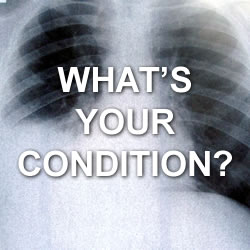Bowel Obstruction
Never let the sun rise or set on a complete bowel obstruction - Old Surgical Dictum

image by: Armando Hasudungan
HWN Recommends
The Sick Bowel Obstruction Patient
Bowel obstructions may present along a spectrum and can pose a diagnostic challenge, with early or low grade obstruction manifesting with non-specific symptoms and a non-focal exam in a relatively well appearing patient. Others are more obvious with classic symptoms of abdominal distention, feculent belching or emesis, significant pain, and decreased to no bowel movements/flatus. Presentation will also vary depending on the location of the obstruction (proximal versus distal).
Recognition of risk factors can aid in the timely workup and diagnosis of an ill patient with bowel obstruction. It is well known that previous abdominal surgeries are a risk factor due to development of adhesions,…
Resources
 Large Bowel Obstruction in the Emergency Department: Imaging Spectrum of Common and Uncommon Causes
Large Bowel Obstruction in the Emergency Department: Imaging Spectrum of Common and Uncommon Causes
Although large bowel obstruction (LBO) is less common than small bowel obstruction, it is associated with high morbidity and mortality due to delayed diagnosis and/or treatment. Plain radiographs are sufficient to diagnose LBO in a majority of patients.
 The Sick Bowel Obstruction Patient
The Sick Bowel Obstruction Patient
Bowel obstructions may present along a spectrum and can pose a diagnostic challenge, with early or low grade obstruction manifesting with non-specific symptoms and a non-focal exam in a relatively well appearing patient. Others are more obvious with classic symptoms of abdominal distention, feculent belching or emesis, significant pain, and decreased to no bowel movements/flatus. Presentation will also vary depending on the location of the obstruction (proximal versus distal).
Bowel Blockage or Obstruction
About 20% of people admitted to hospital with an acute abdomen (or an abdomen that quickly becomes firm, is tender to touch and painful), have an obstruction of their bowel. Of these 20%, the majority (80%) will have a small bowel obstruction.
Bowel obstruction
Bowel obstruction is a common surgical presentation. It can be categorised into small and large bowel obstruction, with key implications for management.
Bowel Obstruction (Diagnosis + Treatment)
Plain abdominal radiography is the initial imaging modality of choice to rapidly confirm the diagnosis, followed by contrast-enhanced CT of the abdomen and pelvis to further characterize the obstruction (provided the plain films do not have findings that indicate the need for immediate intervention).
Bowel obstruction: a narrative review for all physicians
In 90% of cases, small bowel obstruction is caused by adhesions, hernias, and neoplasms. Adhesive small bowel obstruction represents 55–75% of small bowel obstruction cases while hernias and small bowel tumors account for the remainder. Large bowel obstruction is provoked by cancer in about 60% of cases; volvulus and diverticular disease are responsible of other 30%.
Failure in care means bowel surgery patients are dying unnecessarily
More than one in 10 (11%) of those having emergency bowel surgery die within 30 days, according to an audit of the treatment received by 21,000 patients at 192 hospitals in England and Wales. But the death rate is higher than it should be because of the widespread failure of hospitals to ensure that patients whose lives are under threat – from vital organ failure and an obstructed bowel caused by cancer – get the right care before, during and after their o
Girl's Abdominal Blockage Reportedly Caused by Hundreds of Undigested Boba Pearls
Oh cool, just the nightmare we needed today.
Intern Ultrasound of the Month: Small (& Large) Bowel Obstruction
Most common underlying cause is adhesions from a prior abdominal surgery, accounting for 60-75% of cases. This is followed by colonic neoplasm, hernia, IBD, volvulus.
Swallowing Tiny Magnets Can Lead To Big Trouble For Kids
Most of the incidents involve young children, but there was also a rise among older ones, including teens. But why the uptick in magnets being swallowed by teens? Shouldn't they know better? It turns out they're not gobbling magnets like younger kids. Instead, she says, they're mostly using them to mimic body piercings, like, say, a nose or tongue stud. And while these older kids are out looking cool, sometimes those little round magnets come loose. Next thing you know they're in the stomach or lower. Definitely not cool.
The Big Bowel Incident and Little Ms. Oberon
Most people think of diverticulitis or cancerous polyps growing inside the intestinal walls, as causing the bowel obstruction. However, Dr. Richard A. Desi, MD, a gastroenterologist at Mercy Medical Center in Baltimore says, “A bowel obstruction is not really anything on the inside of the bowel.” He explains that most commonly, bowel obstruction can twist “the bowel into a funny position, thus closing it or clamping it off.”
Twisted Bowels- All about Bowel obstructions, both large and small
They make up 2-4% of emergency department visits annually in the US, and 15% of hospital admissions.
 The Sick Bowel Obstruction Patient
The Sick Bowel Obstruction Patient
Bowel obstructions are a relatively common presentation in Emergency Departments (EDs) across the country and are most often due to mechanical obstruction. The majority (~75%) of bowel obstructions occur in the small bowel), with the remainder afflicting the large bowel (LBO).
On The Wards
Bowel obstruction is a common surgical presentation. It can be categorised into small and large bowel obstruction, with key implications for management.
Harvard Health
The problem causing the blockage can be inside or outside the intestine. Inside the intestine, a tumor or swelling can fill and block the inside passageway of the intestine. Outside the intestine, it is possible for an adjacent organ or area of tissue to pinch, compress or twist a segment of bowel.
Mayo Clinic
Causes of intestinal obstruction may include fibrous bands of tissue (adhesions) in the abdomen that form after surgery; hernias; colon cancer; certain medications; or strictures from an inflamed intestine caused by certain conditions, such as Crohn's disease or diverticulitis.
MedlinePlus
An intestinal obstruction occurs when food or stool cannot move through the intestines. The obstruction can be complete or partial. There are many causes. The most common are adhesions, hernias, cancers, and certain medicines.
StatPearls
A bowel obstruction can either be a mechanical or functional obstruction of the small or large intestines. Obstruction frequently causes abdominal pain, nausea, vomiting, constipation, obstipation, and distention. This activity explains the pathophysiology, classification, evaluation, and management in patients with bowel obstruction. It highlights the role of the interprofessional team in treating and decreasing long term morbidity in patients with bowel obstruction.

Introducing Stitches!
Your Path to Meaningful Connections in the World of Health and Medicine
Connect, Collaborate, and Engage!
Coming Soon - Stitches, the innovative chat app from the creators of HWN. Join meaningful conversations on health and medical topics. Share text, images, and videos seamlessly. Connect directly within HWN's topic pages and articles.













